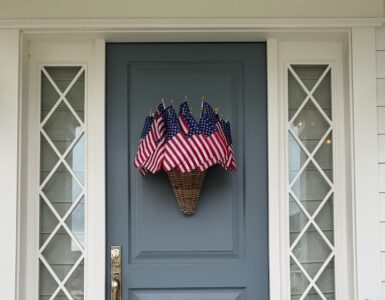Eric Fairbanks with Utah Disaster Kleenup has a spring maintenance to-do list to consider.
Exterior
Inspect the roof
Look for curled or wind-damaged shingles. If not maintained, they could lead to leaks.Clean gutters and downspouts
Make sure they are directing water away from the house. Sprinklers should also be positioned so as not to cause puddles near the foundation of your home.Check the attic
Look for vent blockages, damaged soffits, or wet spots in the insulation or leaks. Also check for proper ventilation.Prune trees and shrubs
Once again, check for proper drainage. Annual growth can result in blockages or disruption of water flow.Check the air conditioning
Central units should be clear of debris and foliage. Evaporative (or swamp) coolers should be checked for leaks; a broken water line can severely damage every level of your home.Inspect siding and stucco
Check for any chipping that can leave it open to moisture. Seal as required.
Check windows and doors
The extreme cold of winter followed by the extreme heat of summer can wreak havoc on seals and caulking. Check to make sure the weatherproofing is still intact.Check the sump pump
Most homes in our community don’t have these, but if you do you must ensure it is working properly. Install a battery-operated pump as a backup.Check outdoor spigots and hoses
If a pipe has frozen during the winter, your basement can flood when you turn the spigot on. Make sure hoses are out of window wells before turning them on.Inspect sprinklers and yard
Ensure that sprinklers do not pool near the foundation of your home. Also, make sure that drainage from your yard is not flowing to your neighbor’s yard (and vice versa).
Electrical System
Inspect light fixtures
Make sure the light bulbs in all of your fixtures are the correct wattageCheck power cords and sockets
Replace any extension cords that have become brittle, worn, or damaged. Make sure the sockets are not overloaded with too many plugs.Protect from surges
Inspect all of your electrical appliances and computer equipment and make sure they have surge protectors as needed.Data and documents
Ensure that all computer data is backed up (preferably off-site). Also make sure that important documents are stored in an area safe from fire and water.
Water System
Check your water heater
Look around the base of your water heater for evidence of leaks. If your water heater is over five years old, it should be checked monthly for any leakage or rusting at the bottom. If water leakage or rust is found, the water heater should be replaced.Identify and inspect shutoff valves
Check each plumbing fixture to make sure they function properly. Know the location of all valves and what equipment and water lines they serve. Teach all family members.Inspect sewer and drains
Your home is equipped with drains on bottom-level floors. Make sure these are not covered with clothes, boxes, or flooring. If water does enter your home, these drains can prevent a lot of damage.
Fire Protection System
Inspect Detectors and Alarms
Check and clean dust from the covers of your smoke and carbon monoxide alarms. If they are not clean, they will not work.Change the batteries
Switch out the batteries on your smoke and carbon monoxide alarms every six months. Newer homes may have alarms hard-wired into the electrical system, but batteries act as an important backup.Check fire extinguishers
Always have a multi-purpose fire extinguisher accessible. Make sure it is Underwriters Laboratories (UL) listed or Factory Mutual (FM) approved. Check the gauges to make sure they are charged and ready to use.Review fire escape plan
Review and even practice your plan with the entire family. Know what to do and where to go.Sources: www.StateFarm.com,
www.seasonal-home-maintenance.suite101.com
For all those difficult clean-up jobs, check out Utah Diaster Kleenup at www.utdk.com














Add comment